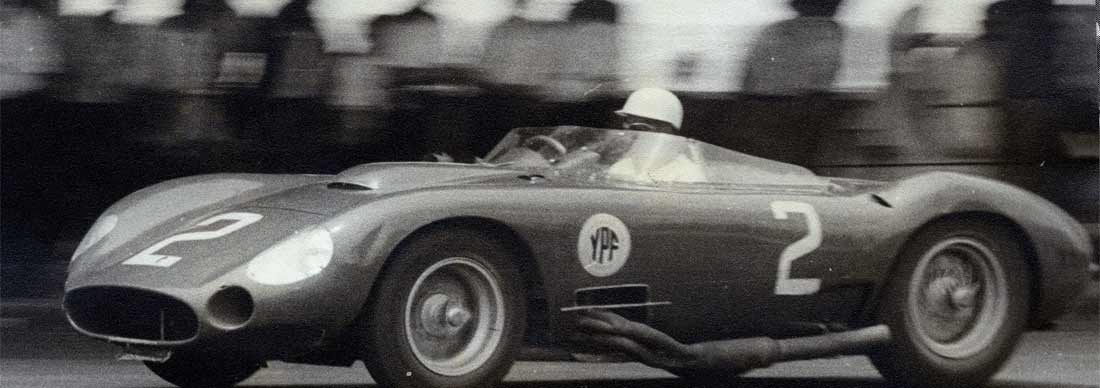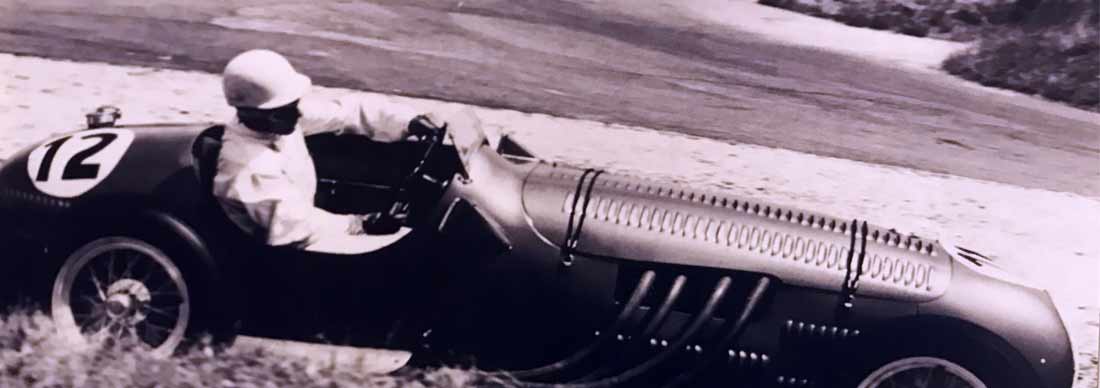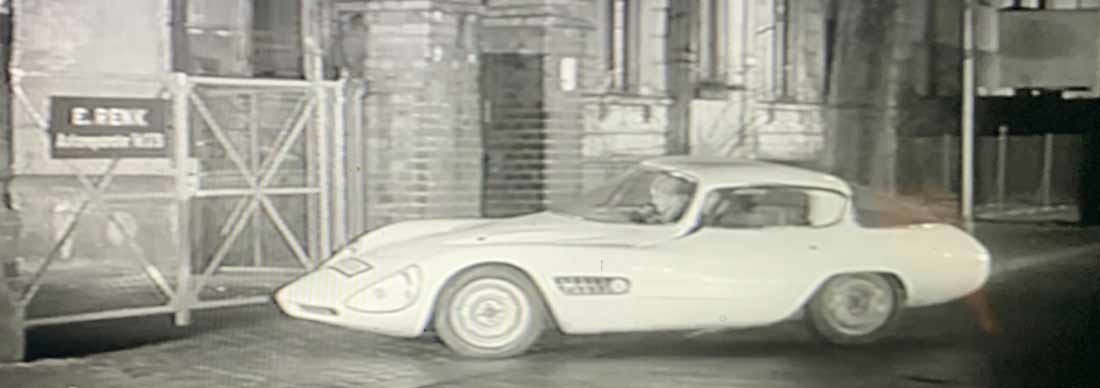
1957 Buenos Aires 1000Kms in Maserati 300S
At the time, Stirling considered this his greatest drive.
The Buenos Aires 1,000 Kilometres was a sports car race in which he was to share with Fangio the wheel of the new 4.5-litre V8 Maserati, the 450S. The organisers had decided to run the race on the Costanera circuit, which had been used in 1951 before the Autodrome was built. It was 6.3 miles to the lap, and the straight doubled back on itself, so in effect there was a two-way traffic system with cars going both ways at around 160mph. As if this was not dangerous enough in itself, the circuit was also unmarked and very bumpy. After Fangio had lapped at around 114mph, an artificial chicane was introduced which reduced lap speeds considerably.
“As to the race itself, although I did not win, I reckon it was one of the best races I ever had. When the flag fell, the 450S simply streaked away from the Ferraris and, by the 10th lap, I was a good 60 seconds ahead of Masten Gregory. By 30 laps I was two and a quarter minutes up. The car called for a considerable amount of discretion in its handling on this circuit, which was a difficult one, with high-speed corners as well as slow ones. Because of its tremendous acceleration and maximum speed, I could have gone much quicker if it had been necessary. I was called in at the 33rd lap and Fangio took over the car and, by the 48th circuit, he had lapped the entire field except for Castellotti, who had taken over from Gregory about the same time as I handed over to Fangio.”
However, this supremacy was not to last. On the 57th lap, the transmission decided it had had enough and would play no longer. The clutch-operating mechanism had broken and Fangio had been changing gear without it, which was too much for the gearbox. Castellotti went into the lead, with the Behra/Menditéguy 3-litre Maserati lying fourth.
Inexplicably, it was not until the 65th lap that this Maser was called in and Stirling took over the 3-litre. He started to give chase to the Ferraris, who counter-attacked by calling in Castellotti on the 67th lap and giving his car to Musso whilst Castellotti took over the de Portago/Collins car.
“Oddly enough the 3-litre was a car far more suited to the circuit and much easier to handle, although not nearly as quick. Anyway, I found it much easier to drive the 3-litre on the limit than to nurse the 4.5, and actually made the fastest lap of the race with the slower car, which could really be thrown around. By 88 laps I had gone through to second place and was on the same lap as the leader, Musso; but, despite his failing brakes, I just could not catch him, and when the flag fell at the end of six hours on the 98th lap I was 80 seconds behind him. It had been a wonderful race and one I enjoyed immensely, culminating in a tremendous ovation from the crowd, who had, it seemed, enjoyed my drive almost as much as I had.”
Once again, glorious victory had not quite been the final result but nevertheless it was one of Stirling's finest of all.
Other articles by Philip






Leave a comment
This site is protected by hCaptcha and the hCaptcha Privacy Policy and Terms of Service apply.